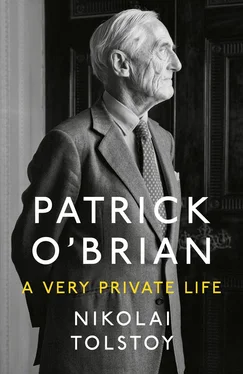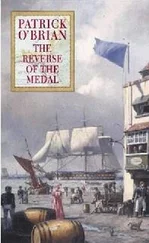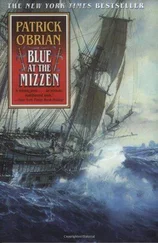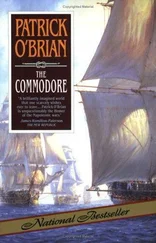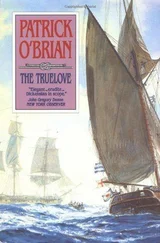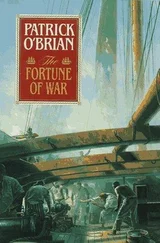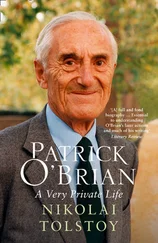The tall red-haired farmer Emyr Vaughan is Patrick’s neighbour Harri Roberts, while his comely wife Bessie provided the model for Bronwen, tragic heroine of the novel. [fn17] Конец ознакомительного фрагмента. Текст предоставлен ООО «ЛитРес». Прочитайте эту книгу целиком, купив полную легальную версию на ЛитРес. Безопасно оплатить книгу можно банковской картой Visa, MasterCard, Maestro, со счета мобильного телефона, с платежного терминала, в салоне МТС или Связной, через PayPal, WebMoney, Яндекс.Деньги, QIWI Кошелек, бонусными картами или другим удобным Вам способом.
Readers may wonder, but for myself I doubt that Patrick himself indulged in serious fantasies about Bessie Roberts. He admired and appreciated attractive women, but was too innately monogamous and devoted to my mother to harbour dangerously improper thoughts. Bessie was simply the model for the fictional Bronwen. Moreover it was a dramatic requirement that the heroine be living immediately below the brooding Pugh in his tiny cottage, while the Roberts farm was the only house adjacent to Fron Wen.
The taxi driver who brings Pugh to his cottage at the beginning was in real life Griffi Roberts, owner of the garage at Gareg, while the gwas (farm boy) John, Pugh’s informant on Welsh lore, was Edgar Williams, our good friend who still lives in Croesor. The originals of other characters are less readily identified today, but there can be little doubt that they reflect to various degrees others with whom Patrick came in contact.
The unmistakable extent to which Patrick drew on real people for his novel dismayed his friend Walter Greenway, who had stayed with him in Cwm Croesor. As Walter later told me, he feared it could cause offence in the valley. However, cordial Christmas greetings and other occasional communications continued to be exchanged annually between Collioure and Cwm Croesor, [fn18] Конец ознакомительного фрагмента. Текст предоставлен ООО «ЛитРес». Прочитайте эту книгу целиком, купив полную легальную версию на ЛитРес. Безопасно оплатить книгу можно банковской картой Visa, MasterCard, Maestro, со счета мобильного телефона, с платежного терминала, в салоне МТС или Связной, через PayPal, WebMoney, Яндекс.Деньги, QIWI Кошелек, бонусными картами или другим удобным Вам способом.
and doubtless Patrick assumed with good reason that few if any people there were likely, or even able, to read a book published in English.
Three Bear Witness (his American publisher retained Patrick’s preferred title Testimonies ) was written in 1950, and as my mother only began keeping a diary from January 1951 I do not know as much as I could wish about its composition. With the physical hardship and mental turmoil of life in Cwm Croesor distanced in time and space, Patrick could contemplate his former existence dispassionately, even with nostalgia. Observing the mountains above Collioure, he noted one day: ‘I love the absolute hardness and contrast of the mountain and just that pure sky: the Cnicht ridge had it often.’ At about the same time he jotted down this verse:
The raven of the Pyrenees
Cries harsh and folds his wings to fall.
On Moelwyn Mawr the watcher sees
The folded tumble, hears the call. [fn19] Конец ознакомительного фрагмента. Текст предоставлен ООО «ЛитРес». Прочитайте эту книгу целиком, купив полную легальную версию на ЛитРес. Безопасно оплатить книгу можно банковской картой Visa, MasterCard, Maestro, со счета мобильного телефона, с платежного терминала, в салоне МТС или Связной, через PayPal, WebMoney, Яндекс.Деньги, QIWI Кошелек, бонусными картами или другим удобным Вам способом.
The contract for The Last Pool provided for the publisher’s retention of an option on his next book, together with an opportunity to consider the proposed book about Southern France. Four months later, on 1 February 1951, Patrick signed the contract for Three Bear Witness . It was in many ways an experimental work, with the imaginative contrivance of the protagonists interrogated in turn for their versions of the same events by an unidentified ‘Recording Angel’. In later life he recalled that ‘I do remember that writing parts of it quite destroyed me’. He also felt it was the best book he had written, and remembered the night he finished it:
‘I was writing very hard that evening, and at three in the morning I went like so on my desk,’ he says, folding himself over his elbows in an exhausted swoon. ‘When I knew it was done I had the feeling of achievement and loss simultaneously’. [14] Конец ознакомительного фрагмента. Текст предоставлен ООО «ЛитРес». Прочитайте эту книгу целиком, купив полную легальную версию на ЛитРес. Безопасно оплатить книгу можно банковской картой Visa, MasterCard, Maestro, со счета мобильного телефона, с платежного терминала, в салоне МТС или Связной, через PayPal, WebMoney, Яндекс.Деньги, QIWI Кошелек, бонусными картами или другим удобным Вам способом.
Although Patrick, always ill at ease when conducting interviews, was on occasion prone to modify or embroider his memories, it does indeed seem likely that the book was written under considerable stress. Poverty at the little apartement at 39, rue Arago was extreme at the time, and there was no knowing whether anyone beyond my mother would appreciate a book that meant so much to him. In fact her initial reaction was one of disapproval: ‘P. finished T.B. which I did not like.’ However, I suspect this was due to alarm at the extent to which their kindly Welsh neighbours featured in largely recognizable guise throughout the tale. Or was she disturbed by its hero Pugh’s silent adoration of the attractive farmer’s wife next door?
At Secker & Warburg, on the other hand, his editor Roger Senhouse expressed approval. He added some reservations – what he conceived to be excessive use of Welsh words and placenames, a need to locate the ‘Recording Angel’ in time or space, ‘the whole conception of the physical side of Pugh’s infatuation needs careful revision’, and so forth. Since it does not appear that the manuscript or proof of the book has survived, we have only glimpses of its original state, and the alterations Patrick was persuaded to accept. As the contract was signed on 1 February 1951, and Senhouse’s fairly drastic ‘improvements’ were forwarded via Curtis Brown a fortnight later, the book must have made its mark as it stood. By March, however, Patrick was expressing extreme annoyance with Senhouse. When in August they learned that he had been in their neighbourhood, my mother wrote: ‘We are relieved to have been away from Collioure & to have missed him. You can tell by his letters he is a pansey.’ [fn20] Конец ознакомительного фрагмента. Текст предоставлен ООО «ЛитРес». Прочитайте эту книгу целиком, купив полную легальную версию на ЛитРес. Безопасно оплатить книгу можно банковской картой Visa, MasterCard, Maestro, со счета мобильного телефона, с платежного терминала, в салоне МТС или Связной, через PayPal, WebMoney, Яндекс.Деньги, QIWI Кошелек, бонусными картами или другим удобным Вам способом.
Читать дальше
